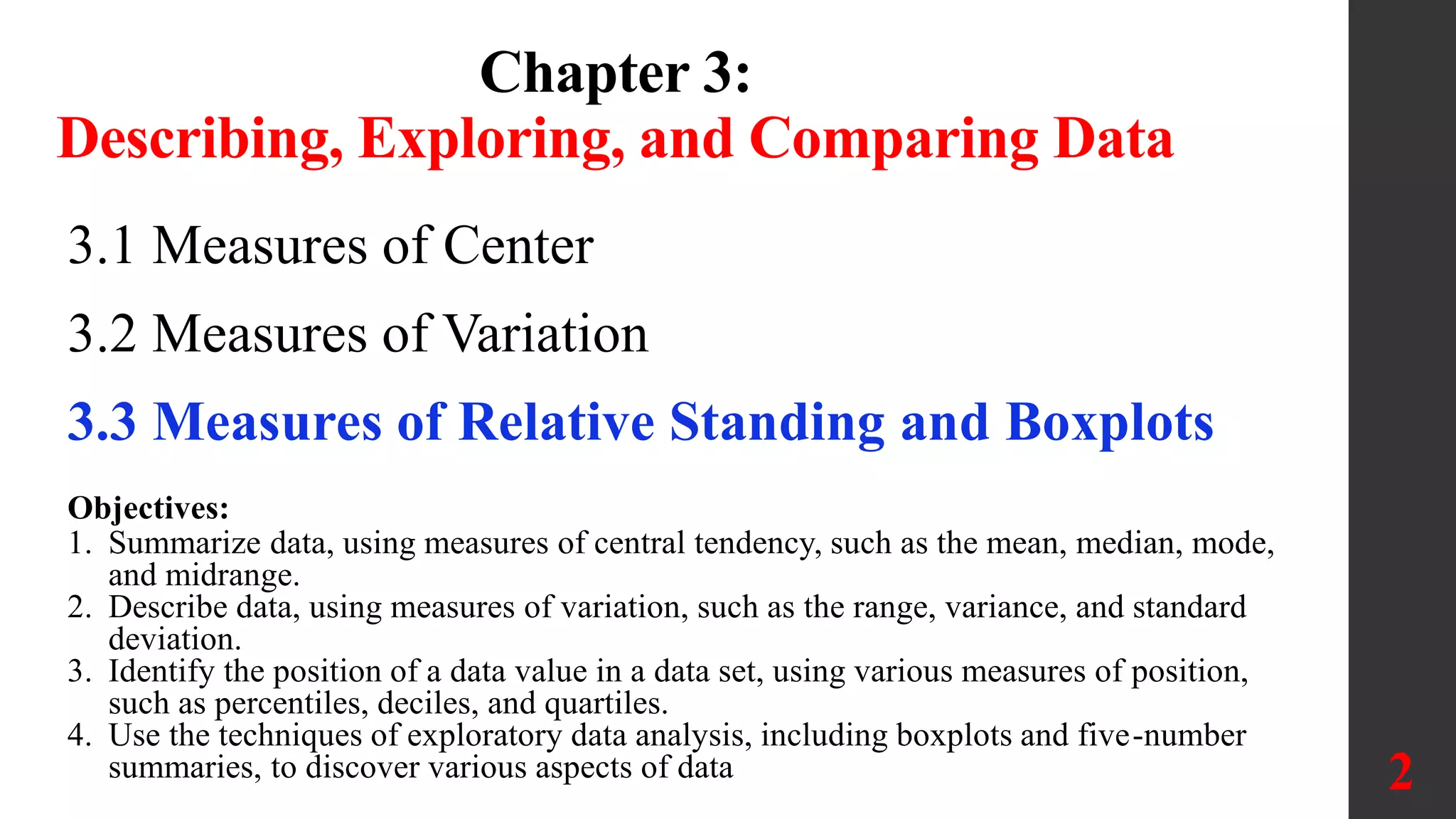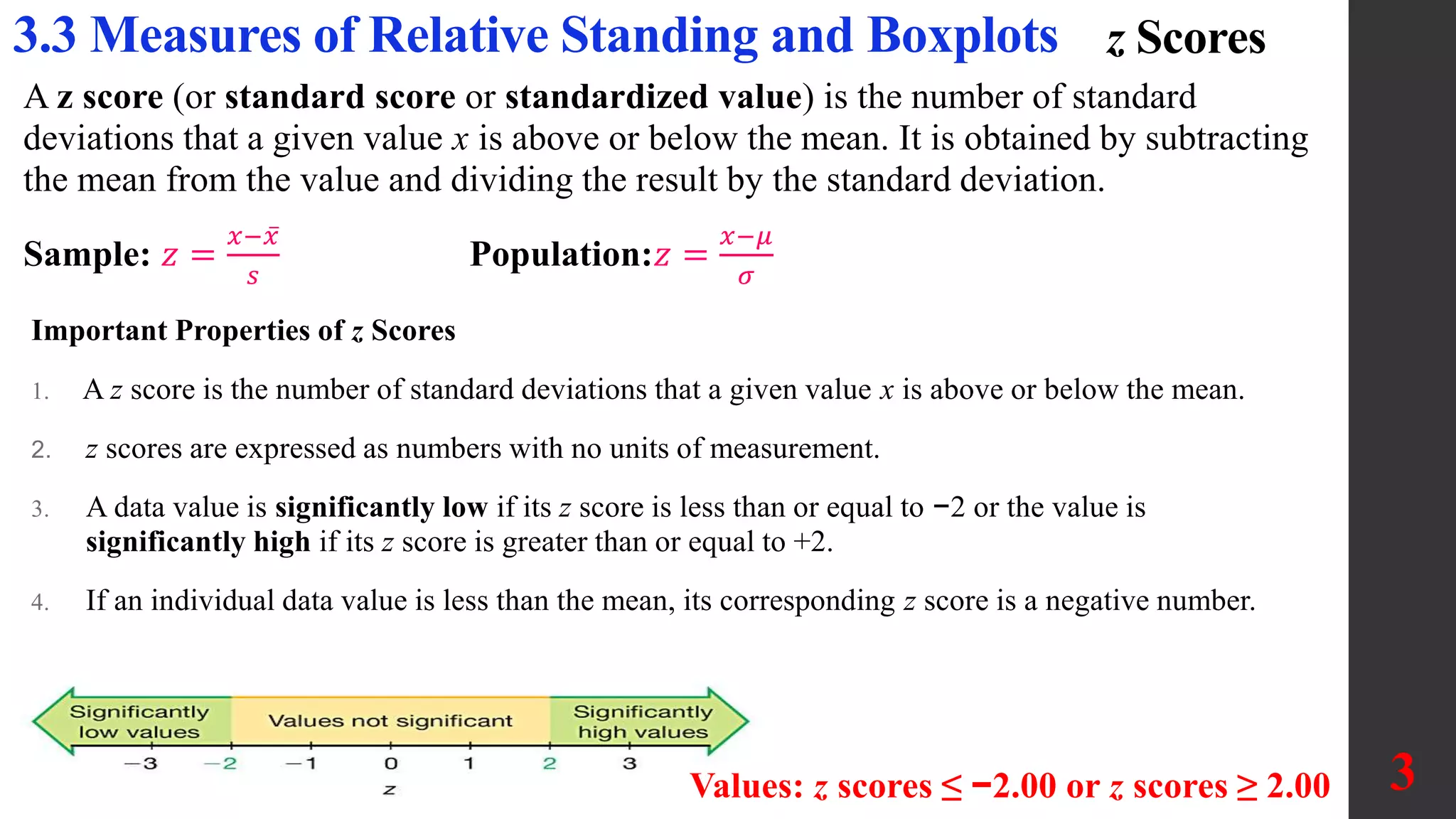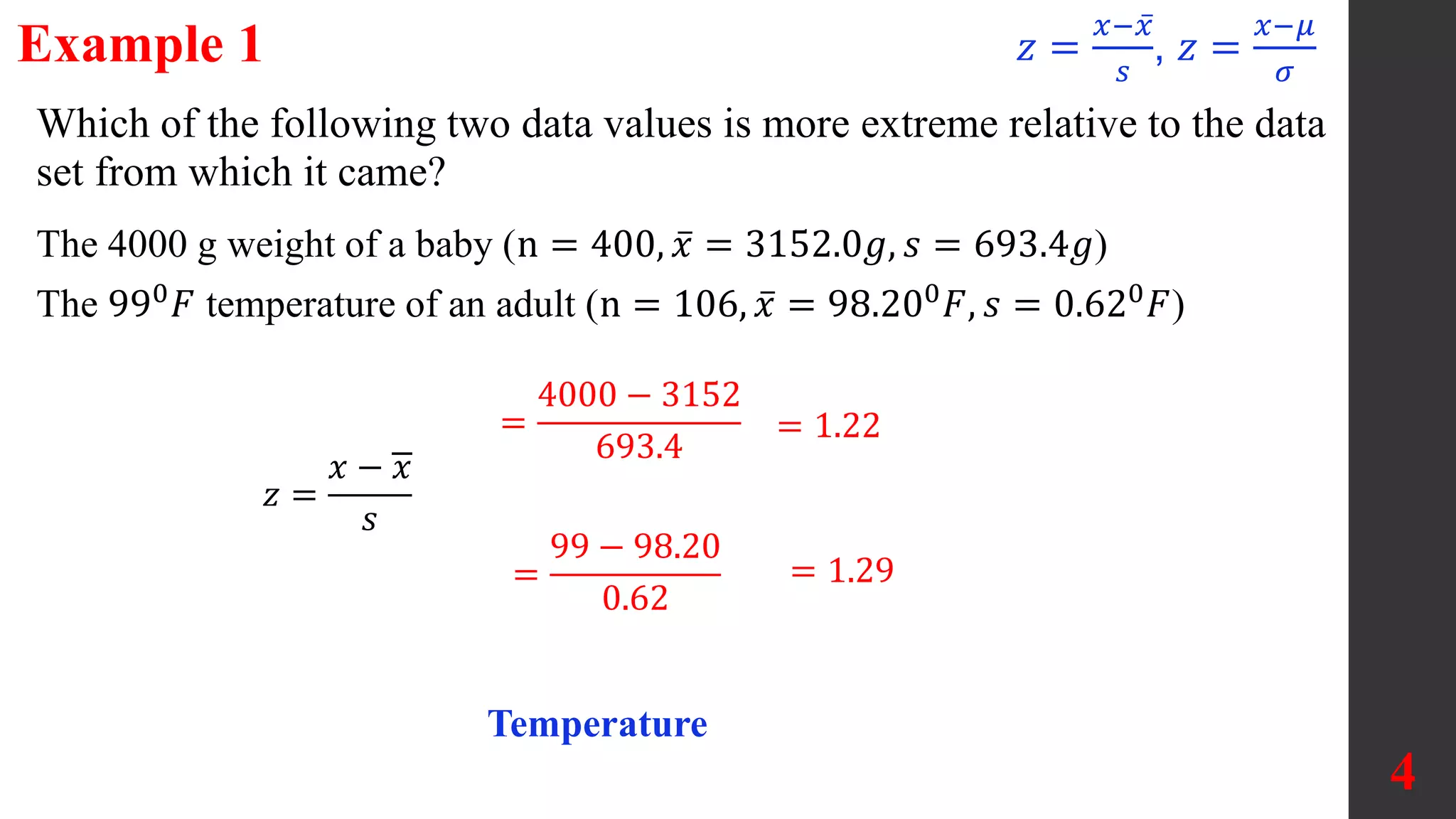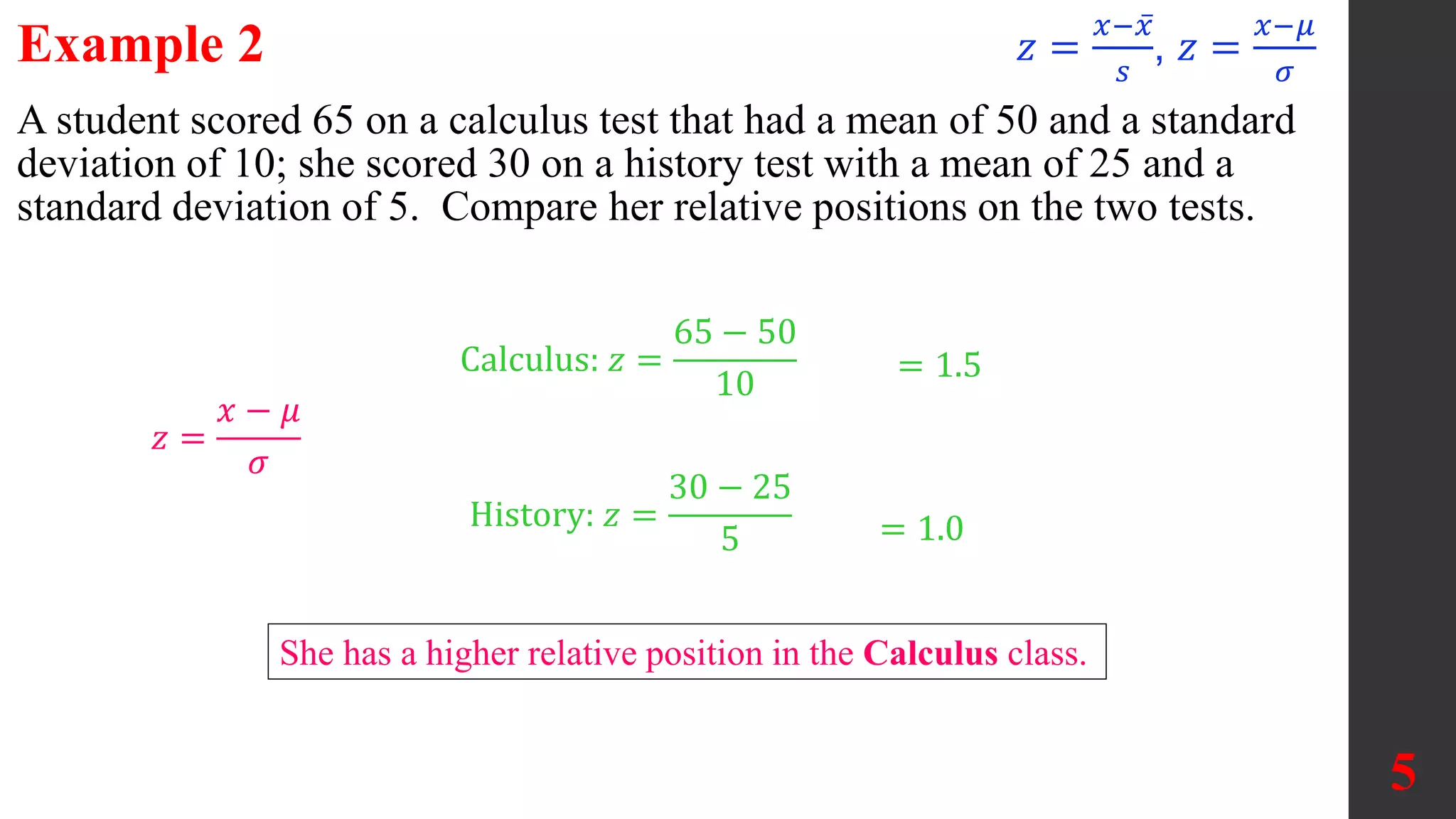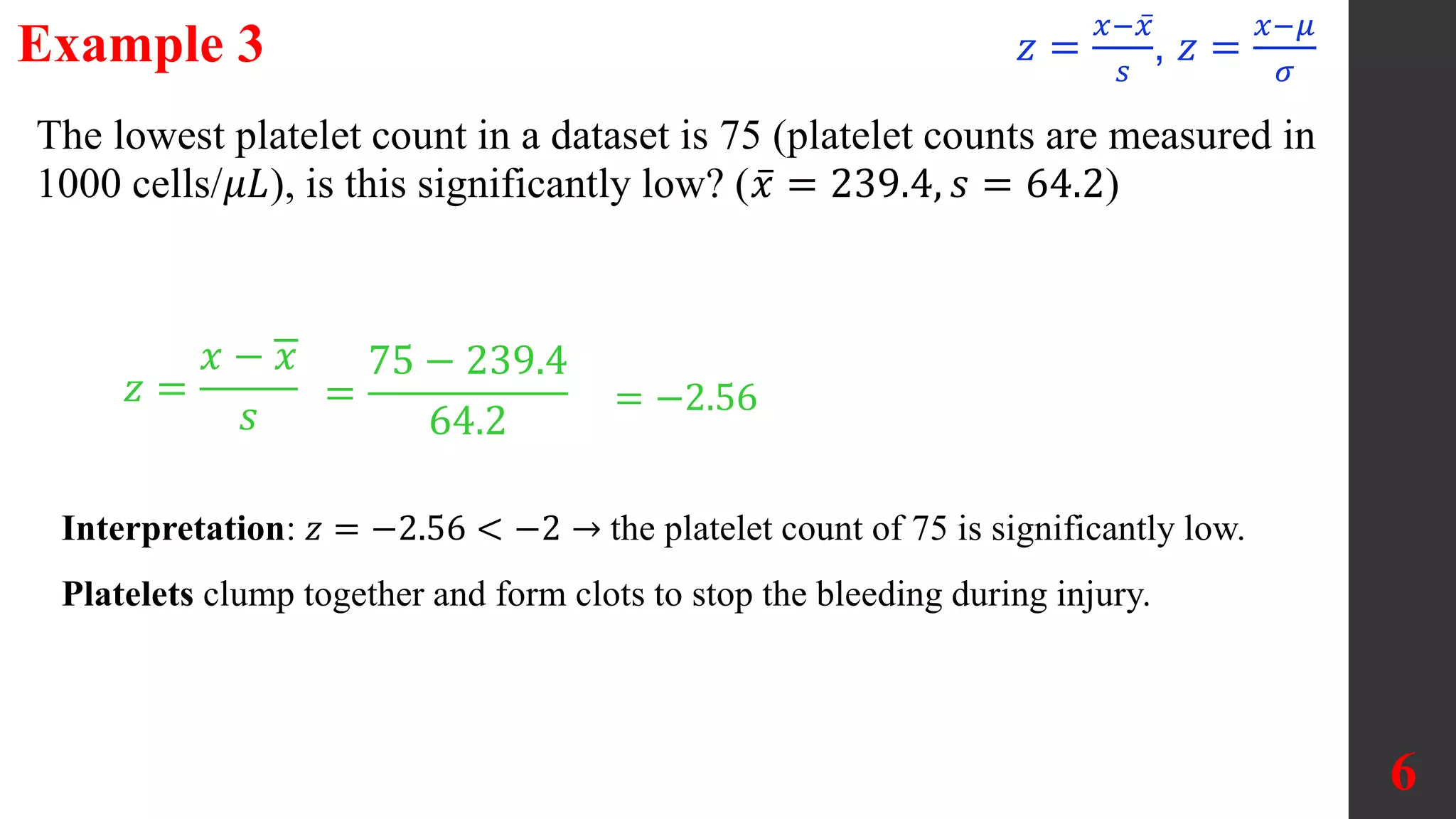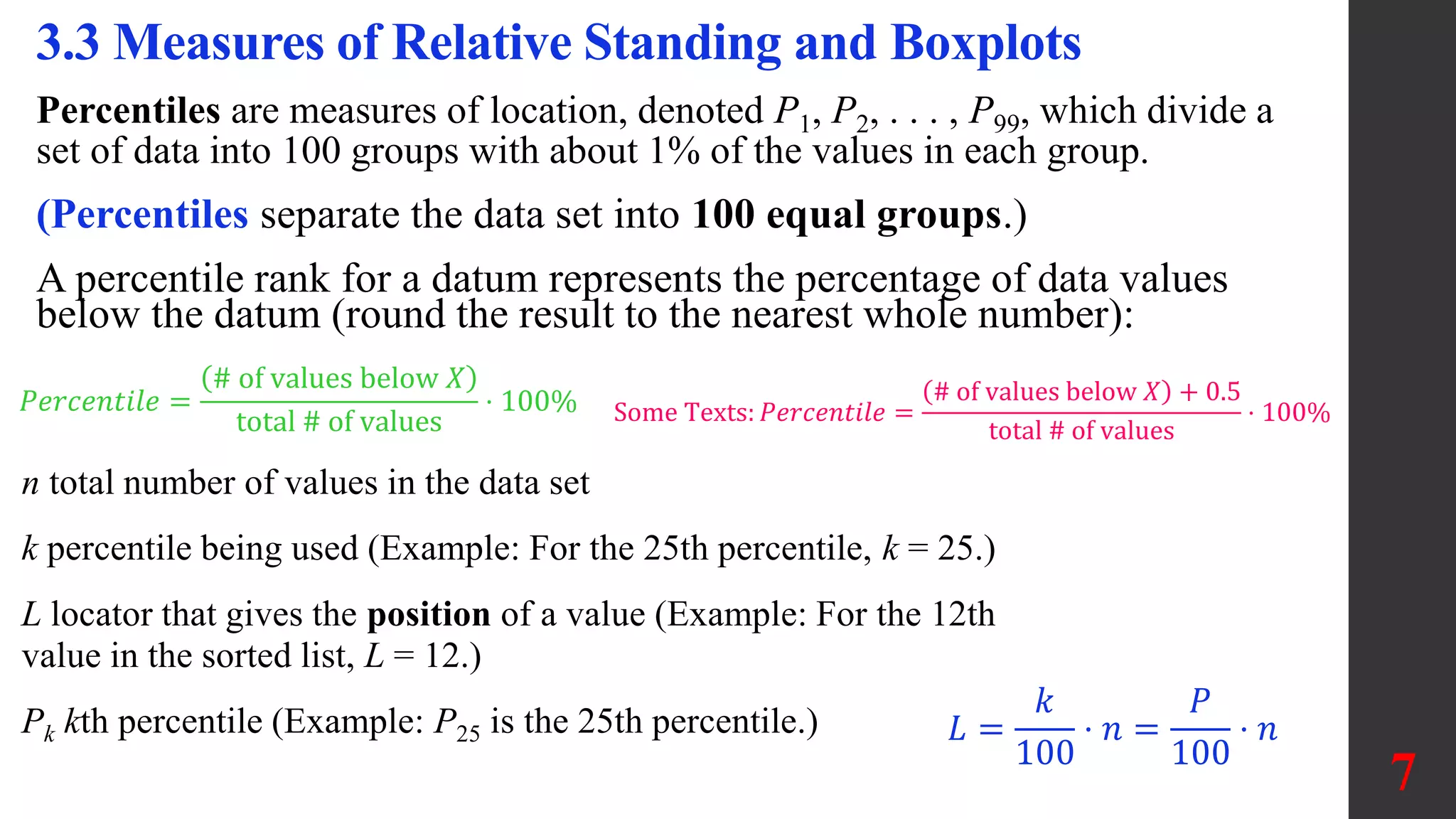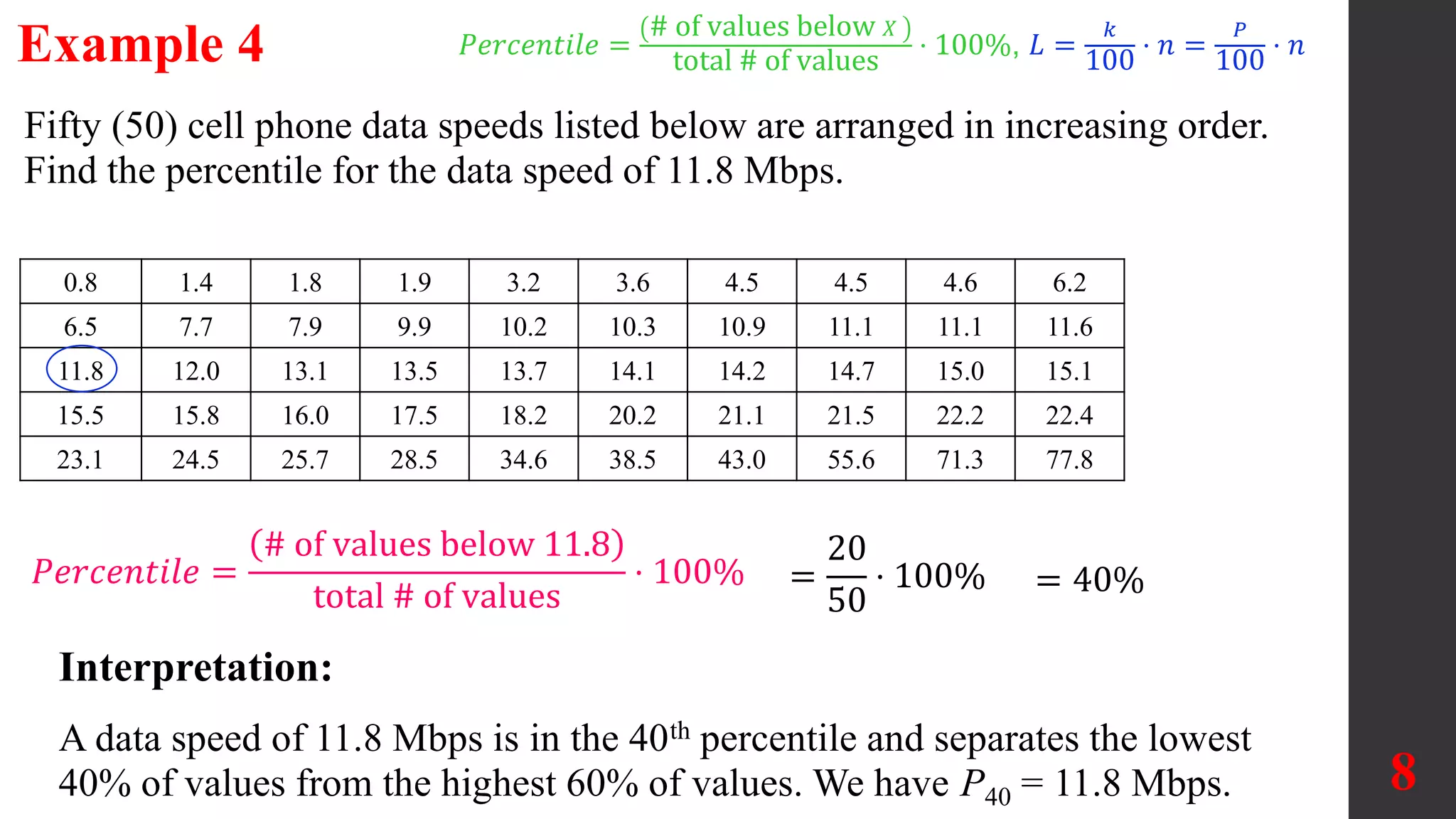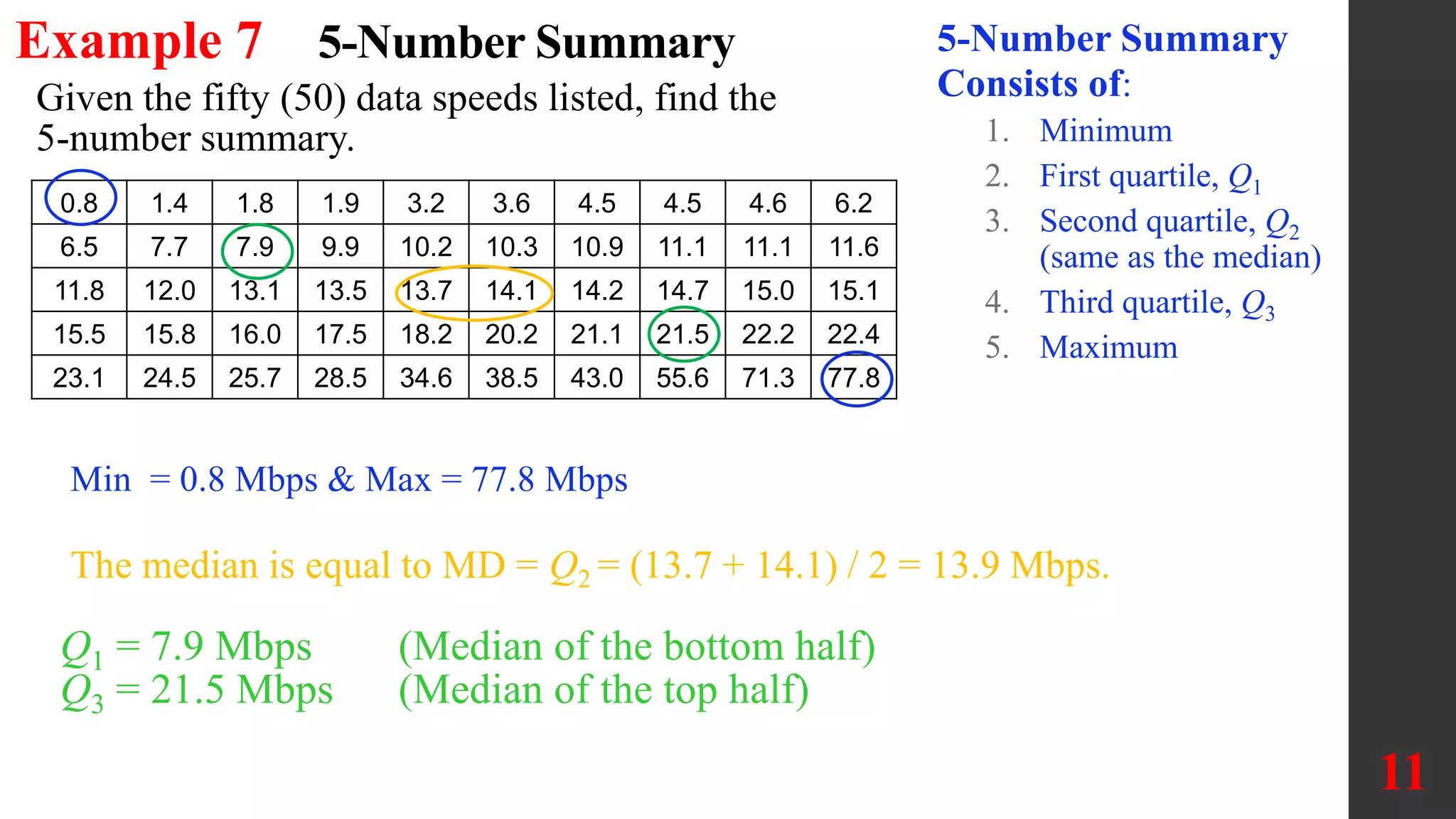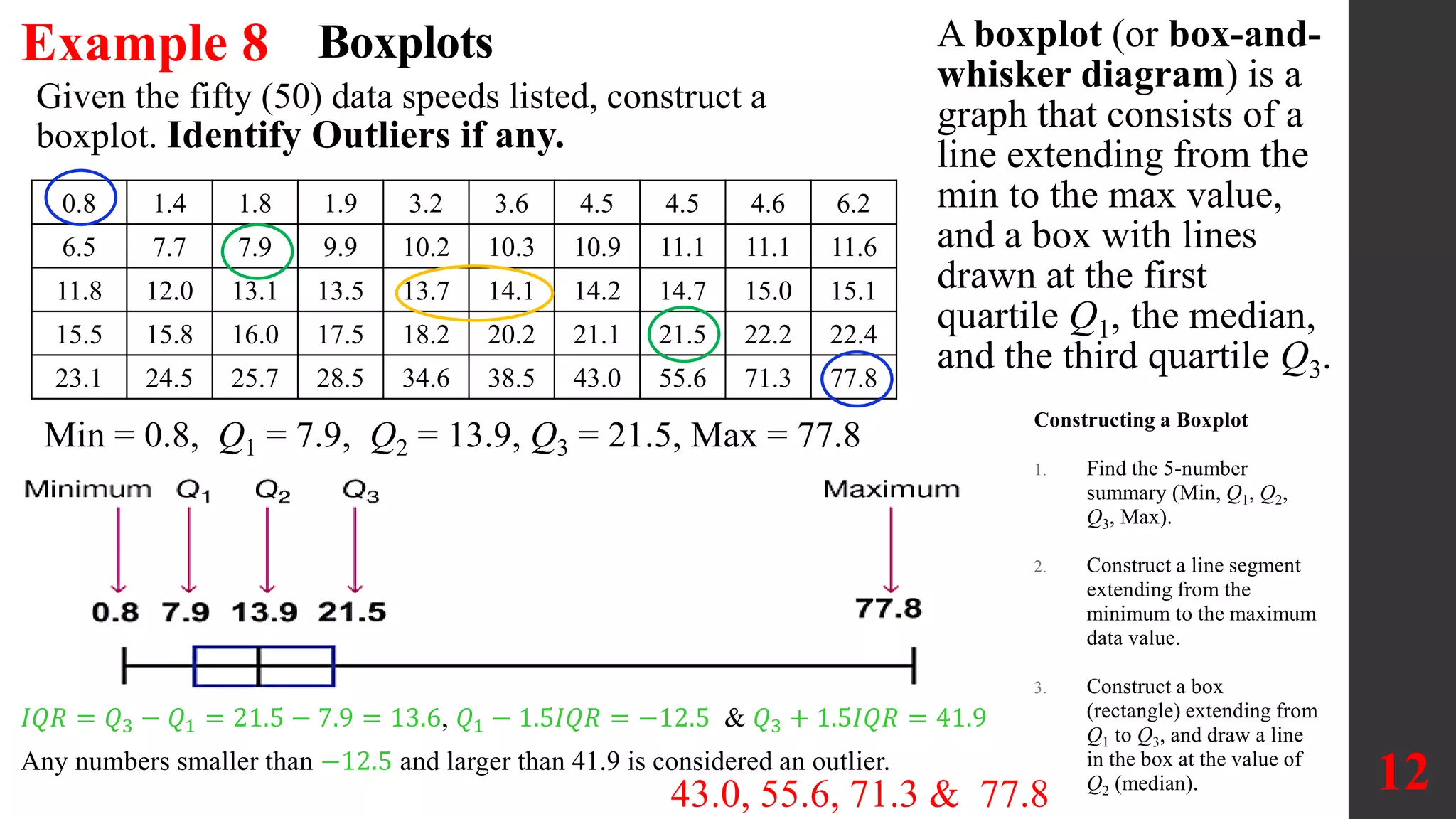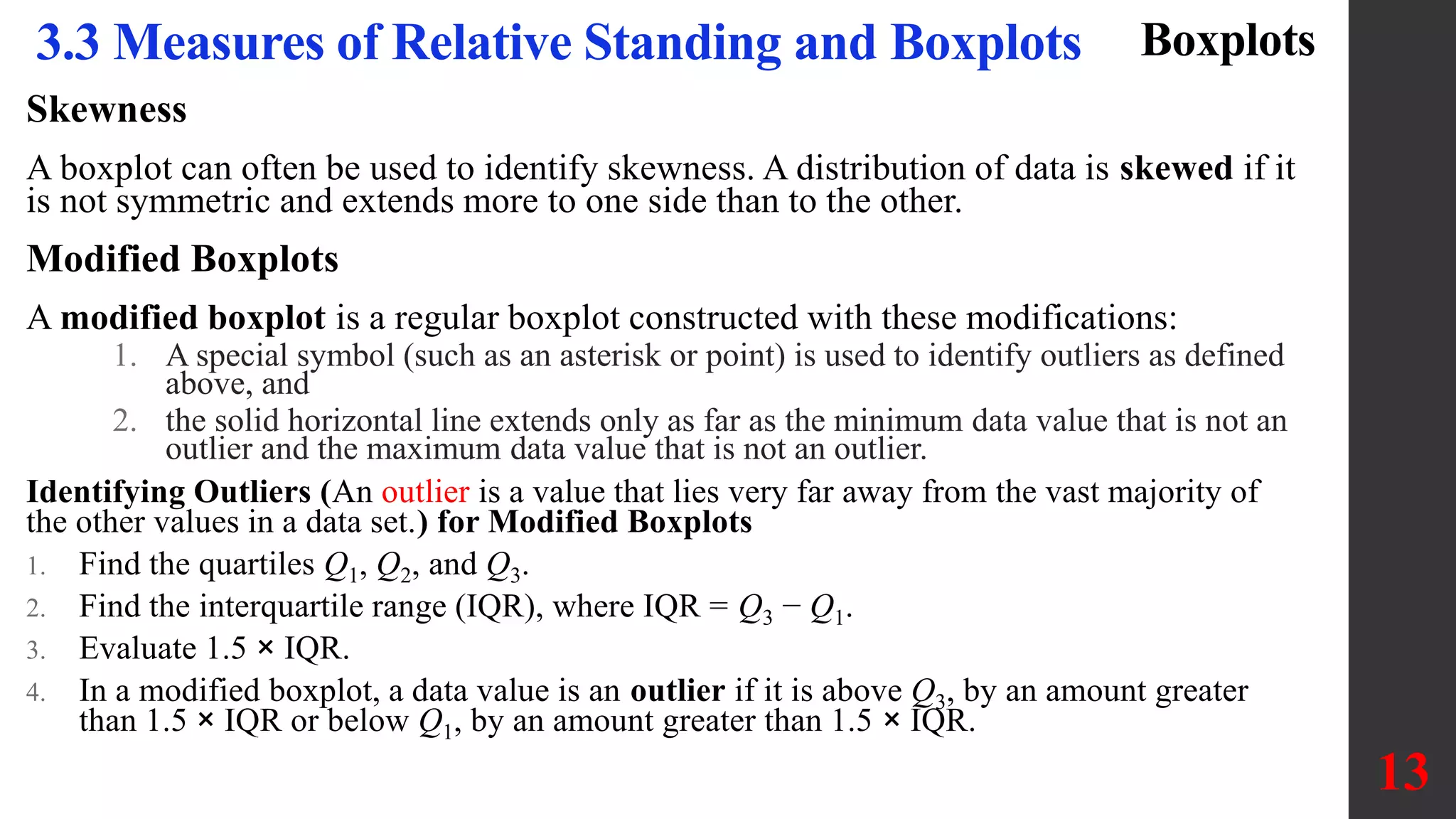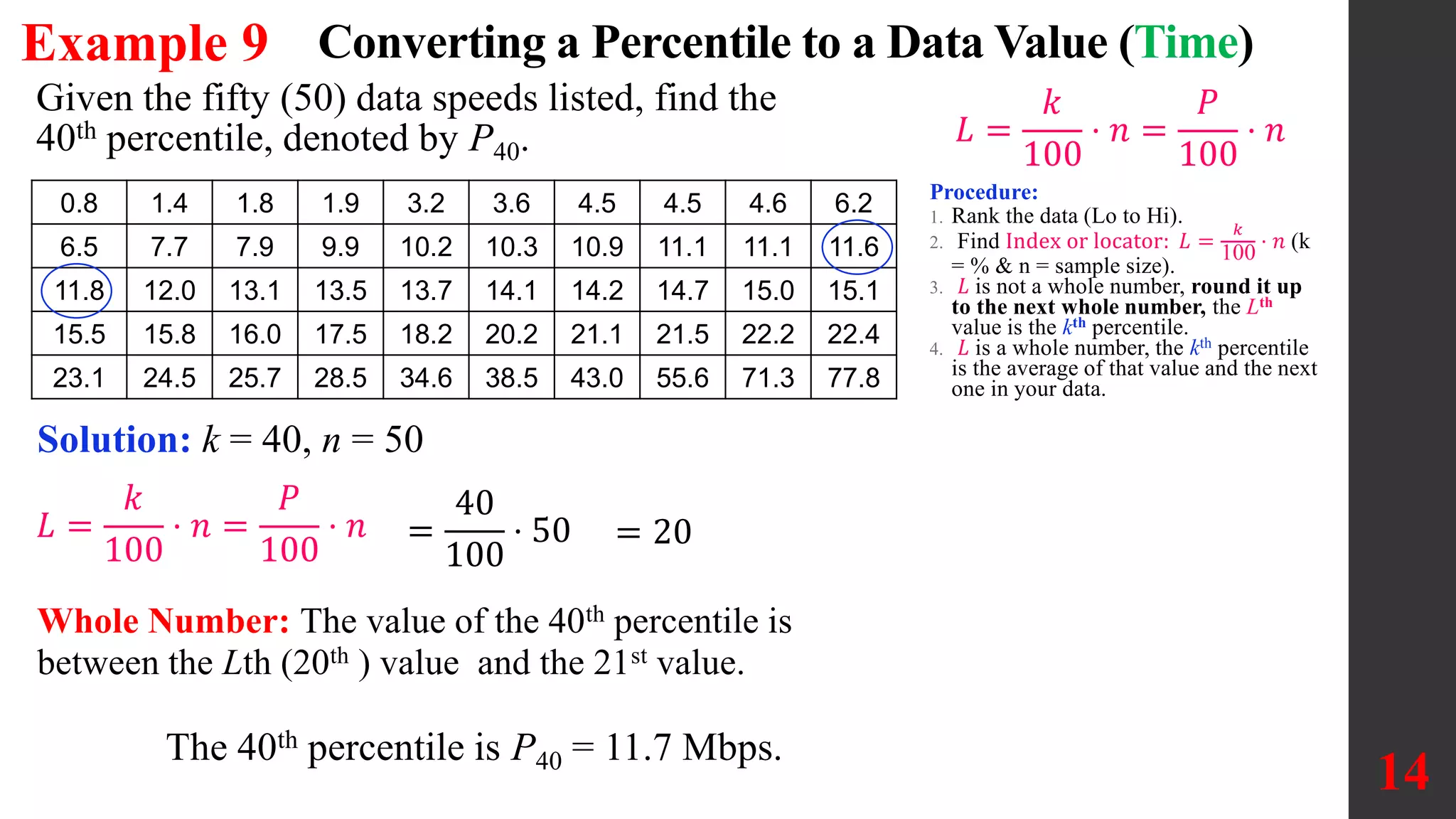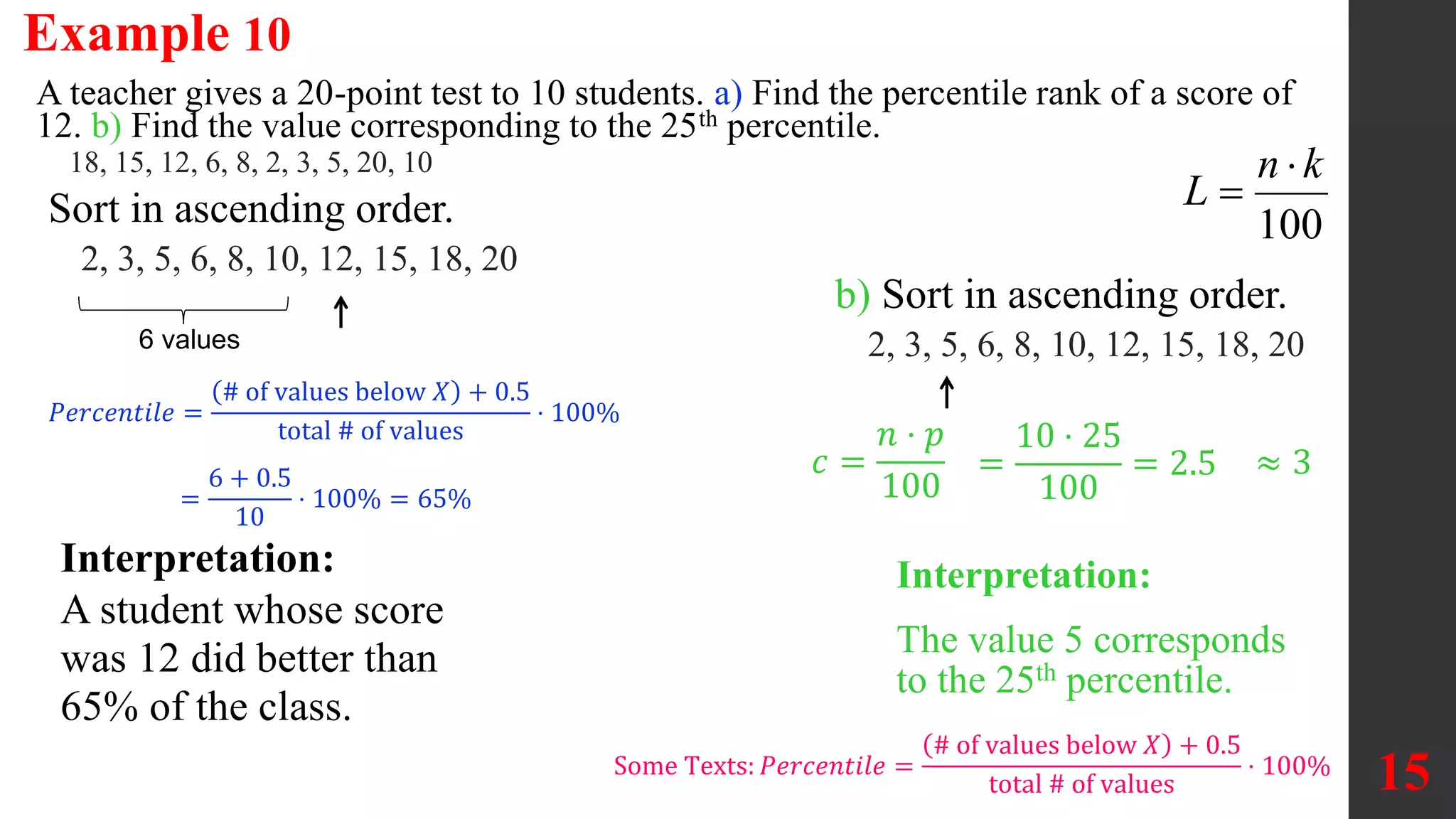Chapter 3 discusses various statistical measures for describing, exploring, and comparing data, focusing on central tendency, variation, and relative standing using techniques like z-scores, percentiles, and quartiles. It emphasizes the use of boxplots and five-number summaries to visualize data distribution, identify outliers, and understand data skewness. Key concepts include calculating measures like the mean, median, mode, and employing formulas for z-scores and percentiles to assess individual data values' positions within a dataset.

